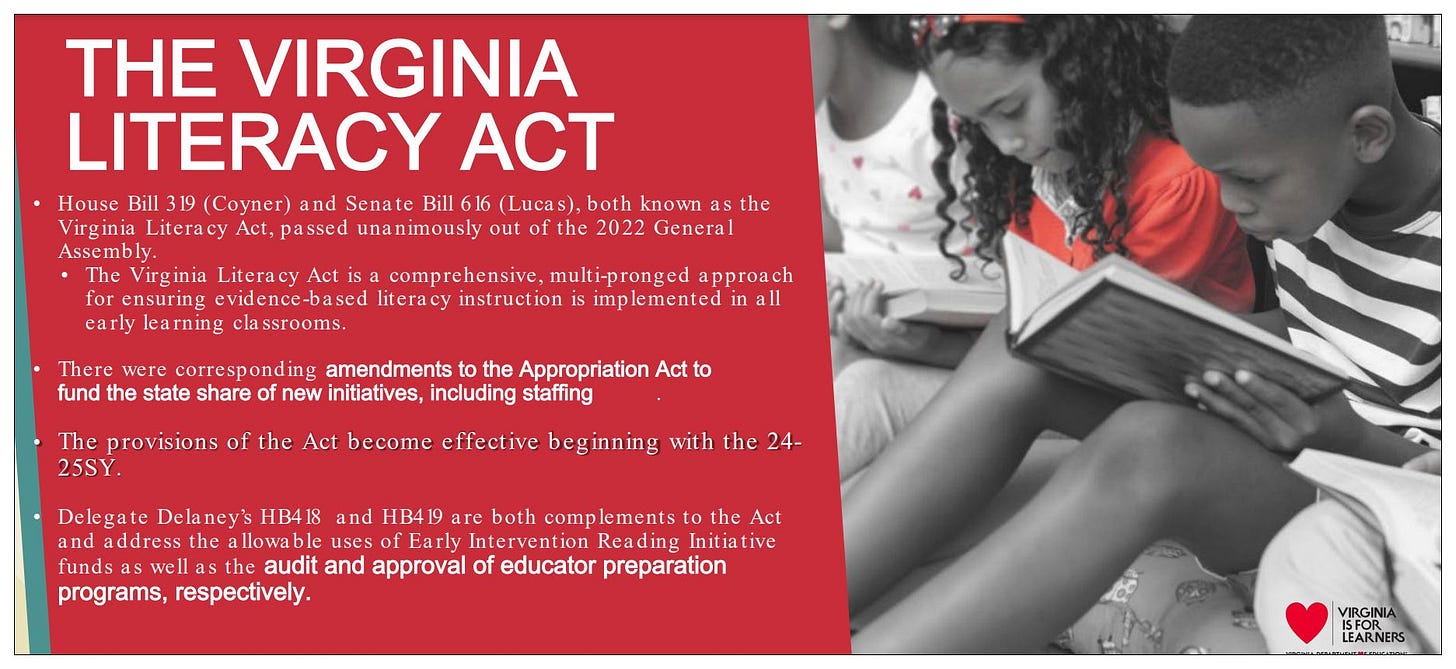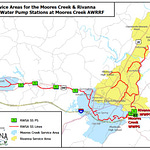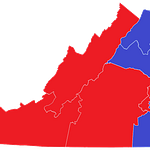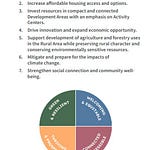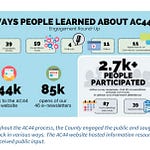Fans of longer days in the mid-Atlantic region of the United States of America have three weeks to go until the world begins turning back to the other way. The solstice will mark the official start of summer, but many would argue it is already here. I’m not here to argue, and neither is Charlottesville Community Engagement, a newsletter and podcast that seeks to document as much as it can. The I mentioned above is me, Sean Tubbs.
On today’s program:
Details on what’s in the compromise budget that the General Assembly will vote on today
Albemarle Supervisors have a full meeting including a vote for a new Planning Commissioner
Two plans for a future Regional Transit Authority are presented to area leaders and both have hefty price tags
First shout-out is for LEAP’s new Thermalize Virginia program
In today’s first Patreon-fueled shout-out: Have you been thinking of converting your fossil-fuel appliances and furnaces into something that will help the community reduce its greenhouse gas emissions? Your local energy nonprofit, LEAP, has launched a new program to guide you through the steps toward electrifying your home. Thermalize Virginia will help you understand electrification and connect you with vetted contractors to get the work done and help you find any rebates or discounts. Visit thermalizeva.org to learn more and to sign up!
General Assembly returns today to consider conference report
Both chambers of the Virginia General Assembly will convene at 10 a.m. to finish work on several bills left over the regular session. The major item left waiting to be finalized is the state budget and conference reports were made public over the weekend.
There are 370 pages in the conference report for HB30, the technical name for the bill that carries the two year state budget that begins on July 1. A team of six Delegates and eight Senators were appointed to come up with compromises.
One running theme is the reduction of funding that is now required because of elimination of the sales tax on foods for human consumption and personal hygiene products. The standard deduction for Virginia income taxes has also been increased from $4,500 to $8,000 for single filers and $9,000 to $16,000 for married couples.
There’s a lot in it, and here are some highlights. Let’s start with education.
A $400 million competitive fund will be set up for local school boards to apply for funding for “construction, expansion, or modernization, of public school buildings.” The grants would cover up to 30 percent of the project cost.
There is a separate $400 million for the School Construction Grant program “for debt service payments on school projects that have been completed or initiated during the last ten years.”
School systems across Virginia will get $104.1 million in FY23 and $257.2 million in FY24 in “hold harmless” payments to represent the loss of revenue from the suspension of the grocery
A hundred million dollars will go into a College Partnership Laboratory Schools Fund which would be for the creation of “public, nonsectarian, nonreligious schools in the Commonwealth established by a baccalaureate public institution of higher education.”
The Secretary of Education is directed to study the practice of collecting student debts for public institutions of higher education.
The RISE Foundation of Waynesboro is allocated $250,000 for preventive services for at-risk youth.
Around $9.5 million over two years will go to support the implementation of the Virginia Literacy Act
Chesterfield County Public Schools would get $1.364 million over two years to help establish a recovery high school for students in “early stages of recovery from substance use disorder or dependency.”
Here are some economic development and tourism items:
There’s $66.7 million in funding over two years to support biotechnology in Virginia, including up to $18 million for the University of Virginia Institute of Biotechnology “to accelerate biotechnology commercialization, genomics and gene therapies, drug delivery technologies and biomanufacturing facilities in the Commonwealth over the next five fiscal years through incentives designed to attract 150 research scientists.”
The Department of Agriculture and Consumer Services will be allocated $125,000 to the Virginia Wine Board to breeding vinifera-style wine groups “with a specified focus on combining vinifera fruit quality with downy mildew resistance, with an objective of commercializing the resulting variety within 10 to 15 years.”
There’s $700,000 to hire seven inspectors for regulating hemp products and investigating possible violations. This is related to changes in the already adopted rules for hemp and marijuana.
Nine million would be spent over the next two years for the Governor’s Motion Picture Opportunity Fund.
The Frederick County Economic Development Authority will get $5 million to help develop sites that can “support the growth of small aerospace, avionics, and unmanned systems companies in Planning District 7.” Matching funds would need to be provided within a year.
Virginia Tech would receive $2.5 million to “create a unique, world-class future truck research and development center in Southwest Virginia.”
Nelson County would get $250,000 to support the planning of a Vietnam War and Foreign Conflicts Museum.
The Woodrow Wilson Presidential Library in Staunton would get a $250,000 grant for renovations.
Thirty million in funding for a new Solar Loan and Rebate program has been eliminated.
The Virginia Economic Development Partnership Authority would get $2.5 million in FY24 for a grant program to spur development in the offshore wind industry.
There’s $200,000 for a feasibility study whether a new inland port should be built in either southwest Virginia or the Lynchburg area.
There’s $2 million for an international sailing event called OpSail250.
Environmental items:
There’s $575,000 in new funding for an invasive species detection program.
The Department of Conservation and Recreation would get $350,000 for creation of an environmental literacy plan.
The Dam Safety, Flood Prevention and Protection Assistance Fund would get an additional $10 million, matching a $10 million appropriation from the state’s share of the American Rescue Plan Act.
DCR would also get $1 million to study of harmful algae blooms on Lake Anna.
The phased ban on polystyrene containers would be delayed five years until July 1, 2028
Another $320,000 would go to monitor groundwater for the presence of perfluoroalkyl and polyfluoroalkyl substances (PFAS).
The Department of Wildlife Resources gets $400,000 over two years for a program to restore freshwater mussels across Virginia.
Here are some land use items:
The Department of Housing and Community Development is directed to develop a model lease for manufactured home parks in collaboration with a wide variety of stakeholders, and to conduct a feasibility study of these parks as a “source of affordable housing for Virginians.”
Just over $11 million for planning for a Center for the Arts at the University of Virginia has been deferred.
For more on how we got to here, some other articles:
After months of wrangling, Virginia has a budget deal. What’s in it?, Virginia Mercury
Lawmakers to vote on budget, won’t take up stadium bill, Associated Press
Virginia budget proposal includes new marijuana crime, WUSA 9
Supervisors to appoint Planning Commissioner for White Hall District
Three candidates are awaiting to see if they will be the one selected to represent the White Hall District on the Albemarle Planning Commission. Jennie More resigned in April before the end of her second term.
Supervisors will meet today at 1 p.m. and will make their appointments at 6 p.m. after a closed session. They will also select a new non-voting member to represent the University of Virginia. The previous holder of that position, Luis Carazana, was elevated to be the at-large commissioner. Unlike the Board of the Supervisors, there are seven members of the Planning Commission.
The applicants for the White Hall seat are Marc McKenney, Lonnie Murray, and Elizabeth Wachtneister. Murray is an elected member of the Thomas Jefferson Soil and Water Conservation Board.
Second shout-out: The Plant Northern Piedmont Natives Campaign
It’s getting close to the end of springtime, and one Patreon subscriber wants you to know the Plant Northern Piedmont Natives Campaign is a grassroots initiative of motivated citizens, volunteers, partner organizations, and local governments who want to promote the use of native plants.
Did you know that National Pollinator Week is June 20th-26th this year? There are many ways to celebrate and learn more about our native pollinators, and here's a great one to start with: Lewis Ginter Botanical Garden is hosting an in-person/virtual Pollinator Power Symposium on June 23rd, and there is an excellent line up of speakers scheduled for the day!
There are plenty of resources on the Plant Northern Piedmont Natives Facebook page, so sign up to be notified of lectures, plant sales, and more!
Partnership briefed on potential vision for regional transit
Work is nearing completion on a conceptual study for how public transport might work better across the entirety of the Thomas Jefferson Planning District. Today the Board of Supervisors will get an up close look at the $350,000 Regional Transit Vision.
Last week, an appointed body consisting of elected officials and transit officials got an update on the Regional Transit Vision.
“The project is a collaborative effort to evaluate and establish a clear long term vision for transit service in the region, and not just the urbanized area but also the rural areas surrounding Charlottesville and Albemarle County,” said Tim Brulle of AECOM is the project manager for the vision plan.
If you’re unfamiliar with planning, you should know that any plan needs a vision statement to provide an overarching purpose.
“To develop, design, and provide transit in the Charlottesville area in a manner that reflects a collaborative, inclusive, and equitable process representing needs in both rural and urban areas,” Brulle said.
The purpose is to reduce reliance on personal vehicles for multiple reasons and outcomes, and to provide a way to get around for people without access to one. But how to make that work?
Scudder Wagg with Jarrett Walker + Associates presented one vision concept that assumed the region had access to new revenues from a transportation authority similar to one in the Richmond area. This is known the “constrained “ vision.
“So basically if you applied a similar funding structure there to your region, how many dollars and if you put most of those dollars to transit, what could it produce?” Wagg asked. “It’s about $26 million a year.”
Such an authority would take enabling authority from the General Assembly and would build off of existing services.
Wagg also presented a vision that assumed no limits on transit funding. For instance, that would allow for expansion of demand responsive service to seven days a week, as well as fixed-route transit to places that currently don’t have it such as Scottsville, Ruckersville, Lovingston, and Palmyra. This “unconstrained” vision would come with a hefty price tag.
“So there’s no defined limit when we were designing a network that we collectively with staff and others at the table felt would help you achieve those goals and the total annual estimate of that network is about $70 million a year to give you some sense of scale,” Wagg said.
Most of that cost is in personnel with drivers and mechanics, as well as a additional vehicles. It takes people to run a transit system, and another way to measure one is through service hours. Wag said Charlottesville Area Transit has about 94,000 service hours a year, Jaunt operates 37,000 for a total of 131,000 service hours for the general public.
The unconstrained vision includes potential collaboration with the University of Virginia whereas the constrained vision does not their role into account.

The partnership isn’t in charge of the purse strings, so today’s conversation before the Board of Supervisors will yield more of a sense of whether there’s an appetite to pursue additional funding and if so, where to direct it.
Jarrett Walker + Associates helped redraw the bus system in the Greater Richmond area, and CAT Director Garland Williams was there at the time.
“The majority of the emphasis was actually put on frequency and our ridership jumped 22 percent,” Williams said. “Then the second piece was to look at once the frequent service is in, how can you readjust networks to adjust travel times.”
Williams said that the same model could be applied here.
A microtransit pilot in Albemarle is a year away from happening and depends on award of funding from the Commonwealth Transportation Board.
“It will be awarded and the starting of it will be acquisition, development of the program, software acquisition, things that have to happen before the actual buses are on the ground,” said Trevor Henry, the assistant county executive.
The regional transit study is separate from a $150,000 governance study about that will suggest how to actually move forward with setting up new structures to actually run the enhanced service, be they constrained or unconstrained visions.




